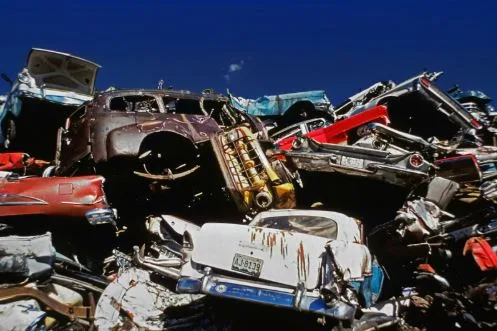Choosing the Right Container Type for Safe and Cost-Effective Shipping
Imagine spending thousands of dollars on shipping, only to find your cargo damaged because you picked the wrong container. It happens more often than you think. Choosing the right container isn’t just about finding a metal box. It’s about protecting your goods, saving money, and making sure everything arrives safely. In this guide, you’ll learn how to pick the perfect container for your needs without breaking the bank or risking your valuable cargo.
Why Your Container Choice Matters
The container you choose plays a huge role in how well your cargo travels. Think of it as picking the right vehicle for a road trip. You wouldn’t use a sports car to move furniture, right? The same logic applies to shipping containers.
When you pick the wrong container, several things can go wrong. Your goods might get damaged from moisture, heat, or rough handling. You could waste money on a container that’s too big or too fancy for what you need. Even worse, safety issues can put your cargo at risk during transport.
The right container protects your items, fits your budget, and meets all safety rules. It’s a decision that affects your bottom line and your peace of mind.
Understanding Different Container Types
The world of shipping Containers offers many options, each designed for specific needs. Knowing what’s available helps you make a smart choice that saves money and keeps your cargo safe.
Standard Dry Containers
These are the most common containers you’ll see. They come in two main sizes: 20 feet and 40 feet long. Standard dry containers work great for most regular cargo like boxes, furniture, electronics, and dry goods.
They’re also the cheapest option because they’re so common. You can find them almost anywhere, which means lower prices and faster delivery. If your cargo doesn’t need temperature control or special handling, a standard dry container is usually your best bet.
High Cube Containers
High cube containers are just like standard containers, but with an extra foot of height. This might not sound like much, but that extra space can be a game changer.
Choose a high cube when you’re shipping tall items or want to maximize your load. They cost a bit more than standard containers, but you can fit more inside. This means you might need fewer shipments overall, which saves money in the long run.
Refrigerated Containers (Reefers)
Need to keep things cold or frozen? Refrigerated containers, called reefers, maintain specific temperatures throughout the journey.
These containers are perfect for food, medicine, flowers, and anything else that needs climate control. They plug into power sources to keep running. Yes, they cost more than regular containers, but they’re essential when temperature matters. Without proper refrigeration, you risk losing your entire shipment.
Specialty Containers
Sometimes standard containers just won’t work. That’s where specialty options come in.
Open-top containers have removable roofs, making them perfect for tall machinery or cargo loaded by crane. Flat rack containers have collapsible sides, ideal for oversized items like vehicles or construction equipment. While these cost more, they can actually save you money by making impossible shipments possible.
New vs. Used Containers: Making the Smart Choice
Your budget matters, but so does quality. Understanding the difference between new and used containers helps you find the sweet spot.
One-Trip (New) Containers
One-trip containers are basically new. They’ve made just one journey from the factory and are in excellent condition. They look great, have no rust, and will last for decades.
Choose new containers when you’re making a big investment, need the best protection, or plan to use them for many years. They cost more upfront, but you get maximum durability and safety.
Cargo-Worthy Used Containers
Cargo-worthy containers have been used before but still meet international shipping standards. They’re certified safe for transporting goods across oceans.
These containers offer huge savings, sometimes 30-50% less than new ones. They might have some dents or surface rust, but they’re structurally sound. For one-time shipments or when budget is tight, cargo-worthy containers give you safety without the premium price.
Wind and Watertight Containers
These used containers keep out wind and water but aren’t certified for international shipping. They’re great for storage or domestic transport.
If you’re not shipping overseas, these budget-friendly options work perfectly well. They cost even less than cargo-worthy containers while still protecting your goods from the elements.
Matching Container Size to Your Needs
Getting the size right saves you real money. Too small means making multiple trips. Too big means paying for space you don’t use.
Start by measuring your cargo carefully. Add up the total volume, including packaging and pallets. Don’t forget to leave room for air circulation and safe stacking.
A common mistake is underestimating space needs. Items rarely pack as efficiently as you imagine. It’s better to have a little extra room than to force everything in and risk damage.
On the flip side, don’t rent a 40-foot container when a 20-footer will do. You’ll pay more for shipping, handling, and storage. Calculate your needs carefully, and pick the smallest container that comfortably fits everything.
Key Factors for Safe Container Selection
Safety isn’t optional. The right container protects your cargo and everyone who handles it.
Structural Integrity Checks
Before choosing any container, inspect it carefully. Look for holes, rust, or damaged doors. Check that the floor is solid with no soft spots or breaks.
Red flags include large rust patches, bent frames, or doors that don’t close properly. These problems can lead to leaks, security issues, or even structural failure during transport. Never compromise on structural integrity, no matter how good the price seems.
Certification Requirements
For international shipping, containers need a CSC (Container Safety Convention) plate. This certification proves the container meets global safety standards.
The CSC plate shows when the container was last inspected and when it’s due for re-inspection. Shipping companies and customs officials check for this certification. Without it, your container won’t be allowed on ships or across borders.
Even for domestic use, certifications matter. They prove the container has been inspected and deemed safe for its intended purpose.
Cost-Saving Strategies Without Compromising Safety
You can save money without cutting corners on safety. Smart choices make all the difference.
First, stick with standard sizes whenever possible. Common 20-foot and 40-foot containers cost less because they’re everywhere. Special sizes or rare types always cost more.
Second, understand the true cost. A cheap container price doesn’t help if delivery costs a fortune. Ask about all fees upfront, including delivery, inspection, and any modifications you need.
Third, know when to invest more. For valuable cargo or long-term use, spending extra on a better container makes sense. But for a one-time domestic shipment of non-fragile items, a basic used container works fine.
Balance condition with budget by honestly assessing your needs. Ask yourself: How valuable is my cargo? How far is it traveling? How long will I use this container? Your answers guide you to the right investment level.
Conclusion
Choosing the right shipping container comes down to understanding your cargo, knowing your options, and balancing cost with safety. Whether you need a basic dry container or a specialized reefer, the right choice protects your goods and your wallet.
Take time to evaluate your specific needs. Consider the size, condition, and type that matches your situation. Check certifications and inspect carefully. With these guidelines, you’ll make confident decisions that lead to successful, cost-effective shipping every single time.





